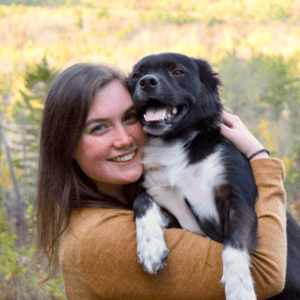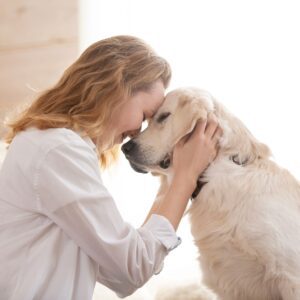We do not have eyes in the back of our heads and simply cannot keep watch of our dogs 24/7. Accidents do happen and so it is important to know the basics of dog first aid in case you were to find yourself in a tricky situation, it could just save a life!
Dogs are naturally inquisitive creatures, and it is one of the many things we love about them but living in a human world presents many dangers that we must be prepared for.
Here are some common accidents or illnesses you could encounter with your pooch. This is by no means an exhaustive list.
Disclaimer: This is basic advice from a non-medically trained individual. If you find yourself in an emergency, you must contact your vet or local dog hospital at once. See base of page for source information.
Choking
If you have never had to wrangle with a dog to extract an unidentified object from its mouth, it is probably fair to say you have never been a dog owner. However, few dog owners know what signs to look for or what to do if a dog is choking.
Symptoms of choking include:
- Excessive pawing at the mouth
- Blue lips or tongue
- Difficulty breathing and choking noises
What to do if your dog is choking:
Firstly, try looking into your dog’s mouth to see if you can see what it is they are choking on. If you can, gently reach in and try to dislodge the item. Be careful at this point not to push the object further down the throat or to get bitten.
If you are unable to dislodge the object this way, lay your dog immediately on its side and using the palms of both hands, apply quick and firm pressure to their ribcage. Continue to do this until you have successfully dislodged the object, or you have arrived at the vets.
Heatstroke
Symptoms of heatstroke include:
- Disproportionate drooling
- Panting and/or difficulty breathing
- Reddening of the gums
- Collapsing
- Unusually quick heart rate
- Increased temperature
What to do if you think your dog has heatstroke:
Call your vet at once and follow all advice that they give you. In the meantime, you want to cool your dog down as much as possible. Do this by placing a damp, cool (not cold) tea towel over their body, apply cool water to your dog’s paws and ear flaps. Be sure to move your dog away from the heat source to somewhere cooler or shaded if outside.
Bleeding
If you notice that your dog is bleeding, the most important thing to do is to try to immediately stop the blood coming out.
Assess the severity of wound. If it is a small cut or graze that is not bleeding heavily, run the wound under clean water for as long as possible to remove as much dirt and bacteria as possible. Keep an eye on the wound and wash regularly with lukewarm salt water. Even if the wound does not appear serious, it would still be advisable to make your vet aware and follow any other advice they can give you.
If the bleeding is heavy, apply pressure to the wound with a clean and dry dressing or cloth and call your vet immediately. Your dog will likely need to be seen by a professional in this instance.
Lastly, if you notice that you dog has an object inside the wound, do not try to remove this yourself and take your dog to the vet to them to extract it.
Insect Stings or Allergic Reactions
For a serious allergic reaction, look for:
- Rapid swelling usually around the face – eyes, mouth and ears.
- Breathing difficulties
- Vomiting/diarrhoea
- Fainting/collapsing
For a milder reaction, look for:
- A rash or bumps on the skin
- Mild swelling
- Drooling
- Difficulty walking (if stings/bites are on the legs or paws)
In either instance, you must contact your vet. Allergic reactions can be erratic, so it is always best to get professional advice ASAP in this instance.
How to perform CPR on your dog
If your dog has suffered an electric shock, choking or drowning, you may need to perform CPR if you are unable to detect a heartbeat. This could be quite a distressing situation to find yourself in, however you must try to remain as calm as possible and ask somebody else to call for help while you perform CPR.
What to do:
Firstly, you must listen and feel to see if you can detect a heartbeat. If not, lay your dog on its side on a firm surface and place one hand under the dog’s chest for support and the other over its heart which is behind the elbow at the top of the front leg.
Press down on your dog’s heart approximately 100 – 120 times per minute. How hard you press will be dependent on the size of your dog. Harder for bigger dogs, not as hard for smaller dogs.
Alternate every 30 compressions with 2 rescue breaths. To perform a rescue breath, you cover your dog’s mouth and breath directly into its nose until you see its chest rise. Continue performing CPR until you detect a heartbeat or arrive at the vets.
We hope that you and your pooch never find yourselves in any of these scenarios. However, if an accident does occur, it is best to be prepared and aware of what to do.
Sources: RSPCA.org.uk, PDSA.org.uk, countryliving.com









Add a comment